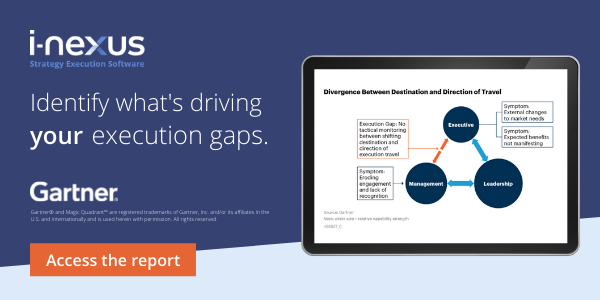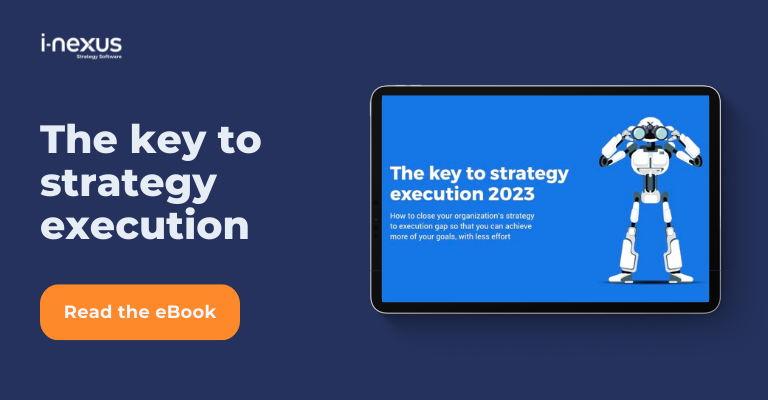In our increasingly volatile world, supply chain disruption is becoming the new normal. Rapid response teams can help reduce supply chain risks, but how can you keep them aligned with your other strategic objectives?
Written by: James Milsom, Head of Marketing
The culture of lean manufacturing and just-in-time delivery is firmly entrenched in today’s economy, and there’s no going back to the bad old days when supply and demand planning were rarely on the same page.
Nevertheless, over the past few years, we’ve seen countless cases of highly optimized supply chains breaking down due to unforeseen events, causing significant disruption to downstream organizations and directly impacting consumers.
The COVID-19 pandemic has provided some of the most spectacular examples—from the shortage of lorry drivers that led to empty shelves in UK supermarkets, to ongoing issues with vaccine supplies forcing many countries to move back into lockdown.
In this blog, we take CSOs and Heads of Strategy and Supply Chain through the role of rapid supply chain strategies and the teams and tools needed to ensure their supply chain disruption is managed in a way that's fit for the volatile todays and tomorrows, and connects to other strategic plans and portfolios.
Disruption is business-as-usual
It’s not just the pandemic.
Think back to 2011, when there was a global shortage of hard disk drives because flooding in Thailand took several key factories offline, reducing production by 25%.
In 2021, hard disk shortages are an issue once again, this time because of the rapid rise in popularity of Chia, a cryptocurrency based on an algorithm that uses large amounts of hard disk capacity to generate value.
While the reasons for these two shortages were completely different—one relating to supply constraints, the other to a massive spike in demand—both scenarios emerged suddenly, were difficult to predict, and caused major problems for companies whose supply chains depend on a stable supply of hard disks.
The truth is, these types of disruption are endemic to a world where globalized, extended supply chains must operate in a volatile political, economic and social environment while also contending with natural disasters and the effects of climate change.
Enter the rapid response team
That’s why organizations are increasingly looking to bolster the resilience of their supply chain strategy by establishing rapid response teams (RRTs).
The role of the RRT is to proactively assess supply chain risks and develop mitigation strategies that can be actioned immediately when needed.
They come into place for example, when CSO looks to diversify the supplier base, invest in production capabilities on-shore or in-house, or create tactical stockpiles to smooth out temporary supply constraints.
For RRTs to work effectively, they need to be granted the autonomy to develop strategies that may be very different from the organization’s normal approach.
They also need the authority to put their strategies into practice quickly in an emergency, which may mean bypassing the normal decision-making hierarchy and prioritization framework in place.
What is power without control?
With the freedom to operate independently of the traditional chain of command, RRTs potentially have a lot of power, and organizations need to ensure that this power is used responsibly.
For example, if the RRT’s strategy involves switching to a different supplier, it’s important to ensure not only that the new supplier is capable of delivering the right products at the right price, but also that they meet the organization’s ethical, social and environmental standards.
Recent scandals around the procurement of personal protective equipment (PPE) during the height of the COVID crisis are a notable example of what can go wrong when a supply chain strategy fails to take these factors into account.
Understanding how strategies at different levels interact
In short, a resilient supply chain strategy cannot be defined in a vacuum—it must coexist and align with all the other aspects of the organization’s strategy, including not only functional strategies for manufacturing, distribution, pricing, HR, and sales, but also environmental, social and governance (ESG) strategies.
Your RRT, therefore, needs visibility of how the supply chain interacts with other strategic concerns so that it can ensure that the mitigations it designs will facilitate the achievement of strategic goals, rather than jeopardizing them.
Equipping your rapid response teams with the tools they need
The best way to achieve this is to equip the RRT—and the organization as a whole—with the right tools.
A centralized strategy execution platform can act as a single source of truth for all strategic interactions, making it easier to assess the potential impact of RRT interventions on both supply chain strategy and other strategic priorities.
Furthermore, as the platform accrues data over time, it will become a treasury of historical data on strategic decisions and their outcomes—enabling the RRT to model and assess emerging situations and make smarter decisions based on lessons learned in the past.
Finally, a strategy execution platform provides a structured way for RRTs to adapt and evolve their supply chain strategy over time, by constantly reviewing and revising assumptions based on the latest supply chain data, together with input from other areas of the business.
This can help to ensure that RRT mitigations do not fossilize by focusing on yesterday’s problems and are always fit for purpose in the hour of need.
i-nexus for supply chain management
As a specialist in strategy execution, i-nexus can help you establish and support your RRT capabilities to help you pivot fast when supply chain disruptions strike—without compromising on your wider strategic goals.
To learn more, visit our strategy execution resource hub, or any of the below:
- What does it mean to make your business agile?: Take the leap into the future of strategic planning and execution with this fascinating insight.
- How AI and machine-assisted learning will help your Strategy Execution: As Artificial Intelligence becomes a mainstay in our lives, read how AI and machine-assisted learning will evolve to support your Strategy Execution.
About the author
James Milsom is Head of Marketing at i-nexus. James has wide-ranging experience in markets such as telecommunications, energy, education, and software.
As Head of Marketing, his drive is to raise awareness and understanding of the challenges facing enterprises in delivering strategic objectives and transformation amidst changing markets and the obstacles traditional tools and methods present leaders.
If you’d like to talk more about Strategy Execution, reach out to James on james.milsom@i-nexus.com or connect with him on LinkedIn for the latest insights.





